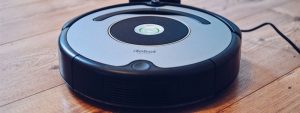 Having a robot vacuum cleaner in your home will help to reduce your cleaning load significant. For one, by speaking to your smart speaker, you can order your robot vacuum cleaner to start its cleaning routine. You can even program it to clean your home every week day while you are at work. And choosing the best robot vacuum cleaner that suit your family is going to significantly relief you on this chore.
Having a robot vacuum cleaner in your home will help to reduce your cleaning load significant. For one, by speaking to your smart speaker, you can order your robot vacuum cleaner to start its cleaning routine. You can even program it to clean your home every week day while you are at work. And choosing the best robot vacuum cleaner that suit your family is going to significantly relief you on this chore.
Controlling a robot vacuum cleaner with voice commands or – more commonly – a mobile app relies on Wi-Fi connectivity, a feature that is fast becoming the norm for these devices and should be considered an essential feature nowadays.
7 in 10 robot vacuum cleaners sold are Wi-Fi-enabled, according to market research firm Euromonitor International. The reason for the shift: Prices of Wi-Fi-enabled robot vacuum cleaners have declined, with entry-level models priced at less than $400, according to Euromonitor.
Overall, robot vacuum cleaners have been finding their way into homes despite being more expensive than traditional vacuum cleaners.
With plenty of options on the market, it becomes quite difficult selecting the best robot vacuum cleaner for your needs. That is why in this article we have reviewed some of the best ones on the market for an easier buying decision from you.
If you want to skip all that, you can consider the ROBOROCK S6 PURE.
A Spotlight On The Best Robot Vacuum Cleaner
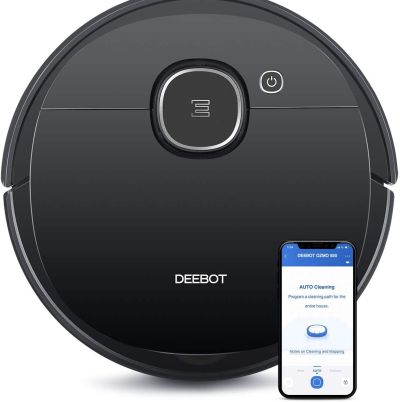

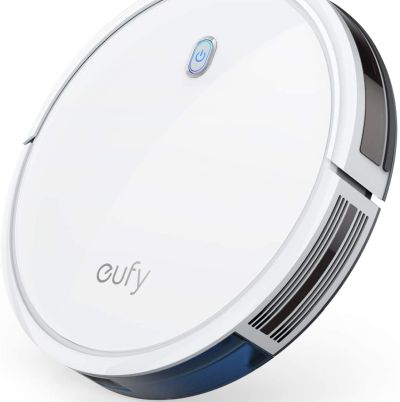

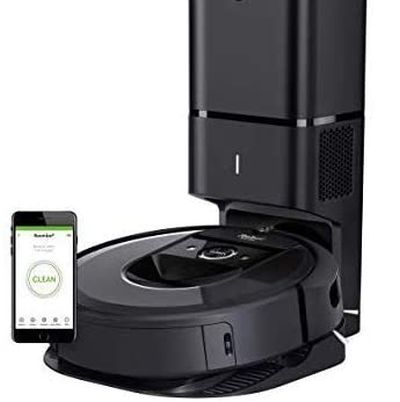

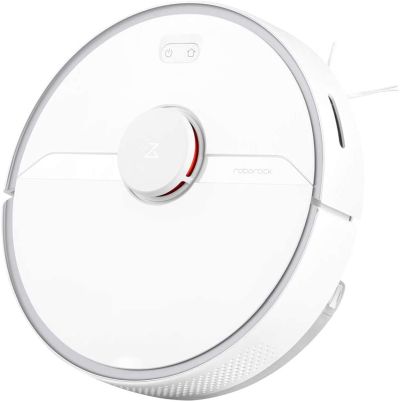

Reviews of The Best Robot Vacuum Cleaner:
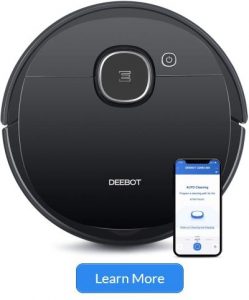 Ecovacs DEEBOT OZMO 920 2-in-1 Vacuuming and Mopping Robot with Smart Navi 3.0 Systematic Cleaning, Multi-Floor Mapping, Works with Alexa, Large, Black
Ecovacs DEEBOT OZMO 920 2-in-1 Vacuuming and Mopping Robot with Smart Navi 3.0 Systematic Cleaning, Multi-Floor Mapping, Works with Alexa, Large, Black
This robot vacuum cleaner does double duty as it can vacuum and mop at the same time.
When it is mopping, it is smart enough to avoid carpets. When it is vacuuming a carpet, it automatically increases the suction power.
The Ozmo is also suitable for those with larger, multi-storey homes. It can create and store maps of different levels of the house and users can select specific rooms to clean.
Key Features:
- Max Suction power of 1,200 Pa
- Dust Box capacity: 0.4 L
- Mopping function: Available
- Noise level: 66 dB
- Wifi connectivity: No
- Amazon Alex compatible: Yes
- Additional strength: Nil
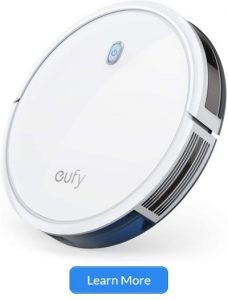 eufy by Anker,BoostIQ RoboVac 11S (Slim), Robot Vacuum Cleaner, Super-Thin, 1300Pa Strong Suction, Quiet, Self-Charging Robotic Vacuum Cleaner, Cleans Hard Floors to Medium-Pile Carpets
eufy by Anker,BoostIQ RoboVac 11S (Slim), Robot Vacuum Cleaner, Super-Thin, 1300Pa Strong Suction, Quiet, Self-Charging Robotic Vacuum Cleaner, Cleans Hard Floors to Medium-Pile Carpets
The Eufy RoboVac 11S is our favourite budget robot vacuum cleaners.
What it lacks in artificial intelligence (AI) smarts and Wi-Fi connectivity, it more than makes up with its affordable price, quiet operation (about 55 decibels) and low height (about 7cm tall).
It also has decent battery life and will provide around 100 minutes of cleaning time when fully charged.
Key Features:
- Max Suction power of 1,300 Pa
- Dust Box capacity: 0.6 L
- Mopping function: None
- Noise level: 55 dB
- Wifi connectivity: No
- Amazon Alex compatible: No
- Additional strength: Nil
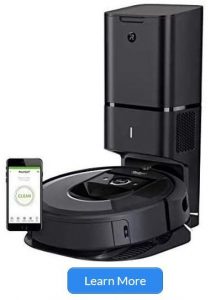 iRobot Roomba i7+ (7550) Robot Vacuum with Roomba e and i Series Replenishment Kit
iRobot Roomba i7+ (7550) Robot Vacuum with Roomba e and i Series Replenishment Kit
The Roomba i7+ is one of the few models with an automatic dirt-disposal feature, which is basically a small vacuum built into its charging dock.
What this means is that the dock will automatically suck the dirt from the robot vacuum cleaner’s bin into a disposable bag that can hold up to 60 days’ worth of dirt.
In short, you can leave the Roomba i7+ to its own devices for months. This convenience, though, comes with a hefty price tag.
Key Features:
- Max Suction power of 1,700 Pa
- Dust Box capacity: 0.4 L
- Mopping function: Available
- Noise level: 66 dB
- Wifi connectivity: Yes
- Amazon Alex compatible: Yes
- Additional strength: Dust Bin which allow you leave it running for months before emptying the bin
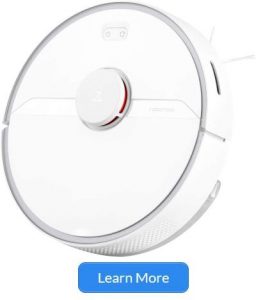 Roborock S6 Pure Robot Vacuum Cleaner
Roborock S6 Pure Robot Vacuum Cleaner
Roborock shot to fame in 2014 as the manufacturer of Xiaomi’s best-selling Mi Home robot vacuum cleaner.
The firm’s latest S6 Pure, launched earlier this year, improves on last year’s S6 model. It is quieter (58 decibels, down from 65 decibels) and charges in half the time (three hours instead of six hours).
It comes with all the features associated with a flagship model, such as mapping, voice control via Amazon Alexa and Google Assistant as well as a water tank for mopping.
Key Features:
- Max Suction power of 2,000 Pa
- Dust Box capacity: 0.4 L
- Mopping function: Available
- Noise level: 58 dB
- Wifi connectivity: Yes
- Amazon Alex compatible: Yes
- Additional strength: Nil
Concluding Remarks
Buyers are often spoilt for choice when picking the best robot vacuum cleaner that is worth the value. All the brands reviewed in this article have various feature that set one apart from the others.
If you want to have the best overall ROBOROCK S6 PURE is the smart choice to go for.
Best Robot Vacuum Cleaner Buyer Guide
Robot vacuum cleaners are far from perfect. They may get tangled by cables, miss a dirty spot and cannot handle spilled liquids. They cannot climb stairs or open doors.
But robots will not skip hard-to-reach areas or abandon the cleaning to watch Netflix. Here are a few things to consider before getting a robot vacuum cleaner.
1. Navigation method
Robot vacuum cleaners generally navigate the home in two ways.
The cheaper, budget models usually rely on a mostly random bump-and-go method that can be frustrating to onlookers, especially if it misses an obvious piece of debris.
Higher-end models have additional hardware like cameras and lasers that are used to build a map of your home. This map helps the robot optimise its route for more efficient cleaning. And if the robot needs a battery top-up midway through a cleaning session, it can pick up from where it left off.
But there are privacy concerns that some manufacturers are sharing robots’ map data – which is typically uploaded to the cloud – with other firms for marketing purposes.
While each navigation system has its own pros and cons, its effectiveness varies depending on the manufacturer’s algorithms.
2. Maintenance
While a robot may do most of the work, you still have to empty and wash its bin. The robot’s filters and brushes need to be changed every few months, depending on usage. The battery also deteriorates with time – most manufacturers offer six months’ warranty for it.
Hence, while it may be cheaper to buy from overseas a robot from a lesser-known brand, you may face issues or delays when sourcing replacement parts.
3. Off-limit areas
Boundary markers – in the form of ugly magnetic strips on the floor – are used by some robots to prevent them from entering a room or area, such as where a pet’s water bowl is placed.
Virtual boundaries are offered by some robots with mapping capability. Users can draw virtual boundaries using the robot’s companion smartphone app to mark out no-go zones.
But for the bump-and-go models, you may have to close the door to prevent them from straying.
4. Size and shape
Manufacturers often tout how the shape of their robot vacuum cleaners is designed to reach the nooks and crannies at home. But whether it is round, square or D-shaped does not matter that much in terms of cleaning performance.
Instead, consider the height of the robot.
You want something sufficiently low-slung to fit under the sofa or bed. Smaller robots are also more agile and likely to navigate minor obstacles like cables. However, they may not have the suction power or battery life of larger models.
5. Noise
If you are at home when the robot is operating, you may want to find out its noise level, which usually ranges between 60 and 80 decibels.
While many models offer a quiet mode of operation, it comes at the expense of the vacuum’s suction power.
Alternatively, schedule the robot to clean when there is no one at home, either through an app or via a remote control.
SHOULD YOU WORRY ABOUT ROBOT VACUUM CLEANER HACKERS?
Let’s address this concern that you may have.
Wi-Fi models typically come with a smartphone app, which is used for a variety of tasks, from monitoring the status of the battery and the dust bin to creating virtual boundaries that prevent a robot vacuum cleaner from straying into a bathroom.
The app can also update a robot vacuum cleaner’s software to fix bugs or vulnerabilities. The latter is important because connected robot vacuum cleaners, like other smart home devices, could be seen as potential targets of cyber criminals.
Researchers had previously uncovered security flaws in robot vacuum cleaners from LG and Xiaomi. In LG’s case, the danger was amplified by its robot vacuum having a built-in camera that doubles as a security camera. But the vast majority of robot vacuum cleaners use laser sensors or gyroscopes, not cameras. Currently, there have been no major cyber-security incidents involving robot vacuum cleaners, unlike with the oft-targeted routers and Web cameras.
Frankly, what is the worst a robot vacuum cleaner can do? At most, it will probably smear dog poo across the whole house.
Think of this. Why would a hacker spend their time and effort to hack a robot vacuum cleaner that wouldn’t bring any financial gain to them?
So in my opinion, this risk is very low.
Related Best Robot Vacuum Cleaner Resources